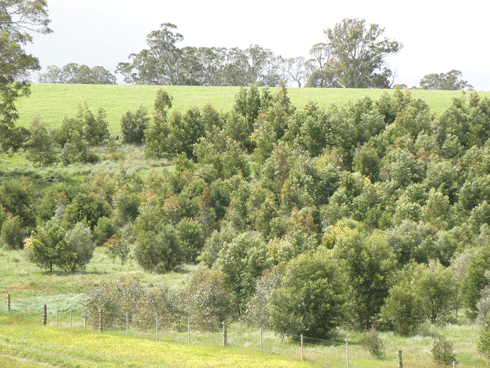
|
Published: 20 May 2013
Carbon economy can also help save Australia’s species
Will Australia's biodiversity benefit from the new carbon economy designed to reduce greenhouse gas emissions? Or will bio-'perversities' win the day?

|
|
Carbon tree plantings must replicate natural plant diversity to sustain overall biodiversity. Credit:
Greenfleet/flickr under Creative Commons CC BY-NC-ND 2.0 licence
|
‘Cautious optimism’ was the conclusion of Professor Corey Bradshaw, Director of Ecological Modelling at the University of Adelaide's Environment Institute. He is lead author of a new paper published in the journal of Biological Conservation which reviewed the likely consequences of a carbon economy on conservation of Australian biodiversity.
‘In most circumstances these two very important goals for Australia's future-greenhouse gas emission reduction and biodiversity conservation-are not mutually exclusive and could even boost each other,’ Professor Bradshaw says.
‘There are, however, many potential negative biodiversity outcomes if land management is not done with biodiversity in mind from the outset.’
The paper was co-authored by 30 Australian scientists. They reviewed six areas where Australia's Carbon Farming Initiative could have the greatest impact on biodiversity: environmental plantings; policies and practices to deal with native regrowth; fire management; agricultural practices; and feral animal control.
‘The largest biodiversity “bang for our buck” is likely to come from tree plantings,’ says Professor Bradshaw. ‘But there are some potential and frightening “bioperversities” as well. For example, we need to be careful not to plant just the fastest-growing, simplest and non-native species only to “farm” carbon.
‘Carbon plantings will only have real biodiversity value if they comprise appropriate native tree species and provide suitable habitats and resources for valued fauna. Such plantings could however risk severely altering local hydrology and reducing water availability.’
Professor Bradshaw says carefully managing regrowth of once-cleared areas could also produce a large carbon-sequestration and biodiversity benefit simultaneously. And carbon price-based modifications to agriculture that would benefit biodiversity included reductions in tillage frequency, livestock densities and fertiliser use, and retention and regeneration of native shrubs.
‘About 60 per cent of Australia is devoted to cropping and grazing, so if we can manage to modify agricultural practices using carbon legislation that also benefits biodiversity, the potential gains are large,’ he says.
He urged conservation planners to start taking greenhouse gas abatement values into account when planning optimal biodiversity outcomes.
‘In general we are cautiously optimistic that moves to reduce greenhouse gas emissions through carbon pricing initiatives can also help conserve our biodiversity - but that, of course, depends on future governments not short-sightedly killing the carbon pricing system.’
Source: University of Adelaide



